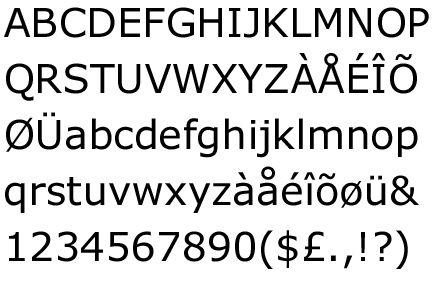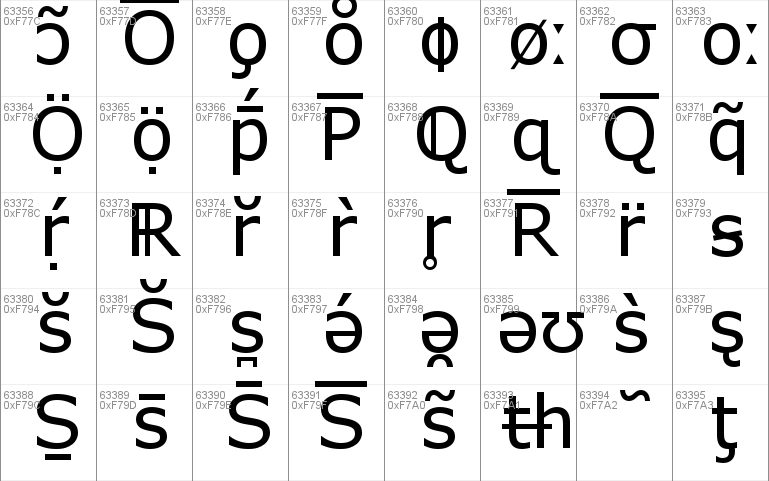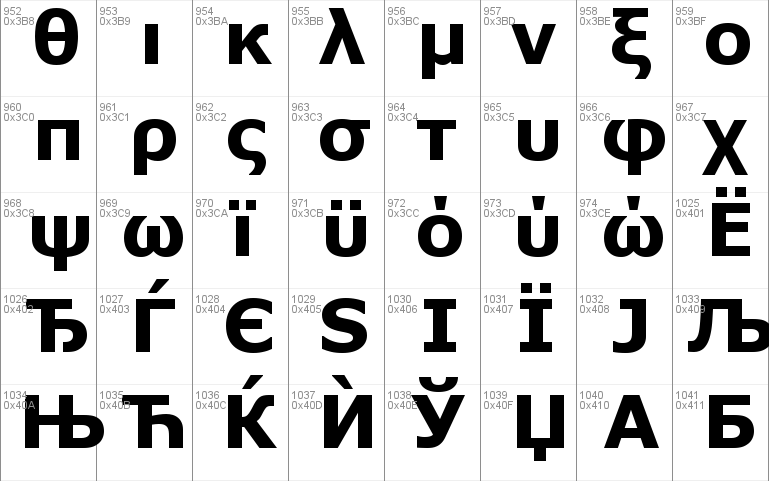
This printer font attribute is only significant for device types with the printer driver POST (that is, PostScript printers).
#Verdana cyrillic font drivers
Some SAPscript printer drivers (for example, the PCL-5 driver HPL2) generate a printer command for font selection from the definition of a printer font. The text hereafter is copied from TDPRFTPROP data element documentation: Proportional: this flag is only available for HPL2 driver.CPI is only used for non-proportional fonts to indicate the spacing between each character, while the font size indicates the height only (unlike proportional fonts for which the width of each character is calculated as being the font size multiplied by the width defined in font metrics (AFM) or in TrueType Font file). CPI (Characters Per Inch it is also called character pitch).If you enter a font size > 0, you cannot select Scalable. If you enter a font size of 0, you should select Scalable, though it is mandatory only for HPL2 driver for reason of backwards compatibility with releases before 3.0 (as explained in message TD375). Scalable: it means that this device type (printer model) is capable of using the AFM data to scale the font to any required size.It must be 0 if you define a proportional font.


Load AFM File: you must select one device type and select an AFM file to upload (the AFM data must be version 2.0 and marked as so).Check Print Controls: you must select one device type, SAP displays values of printer controls used for each printer font defined for this device type.Generate Font: you must select one device type, all fonts are checked.All existing device types in the system are displayed.Font conversion: for the selected system font, and for each device type, SAP determines and displays the printer font that will be used for printing.For more information, see Microsoft RTF specification. For example, RTF information for Verdana would be \froman\fcharset& Verdana. It can usually be defined as \froman\fcharset& windowsfontname. RTF information: it is needed to display fonts on screen and on print preview.Possible values are: *, J (Japan), A (Arabic), 3 (Korean), 1 (China), 8RW (Cyrillic), 2 (Thai), G (Greek), M (Ming). Language Vector: this is used to indicate the type of character set that is defined in the font, that is used in Font Conversion algorithm so that to not convert an Arabic font into a Japanese font.For example Arial N_I_ means that the family font is a true type font with normal and italic, but there is neither bold nor bold + italic. The font family description also have 4 last characters equal to regular expression which indicates what styles are installed (see System font below), where: N = normal, B = bold, I = italic, X = bold + italic.



 0 kommentar(er)
0 kommentar(er)
